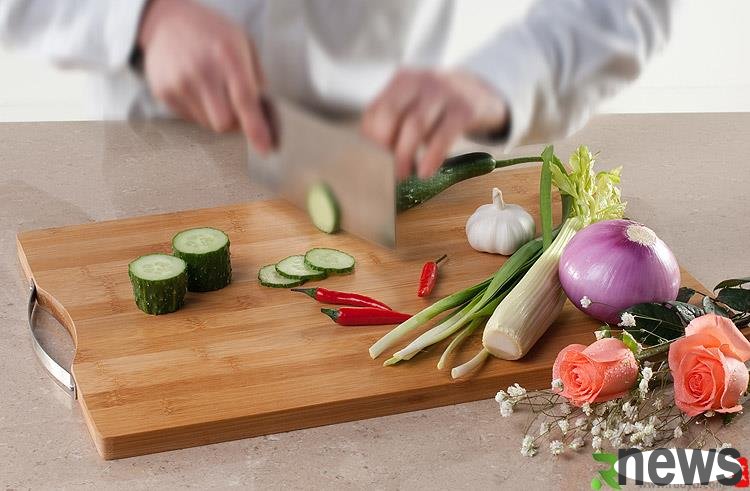Study found that 40% of food poisoning is caused by unhealthy hygiene problems in the home. In the kitchen, the dirtiest item is the cutting board, which hides 200% more bacteria than toilets. We usually think that the toilet is dirty, so we spend a...
Study found that 40% of food poisoning is caused by unhealthy hygiene problems in the home. In the kitchen, the dirtiest item is the cutting board, which hides 200% more bacteria than toilets. We usually think that the toilet is dirty, so we spend a lot of time cleaning it. But in fact, the kitchen is the most dangerous place where bacteria are lurking, and raw meat, raw vegetables, poultry, etc. are the culprits.

The germs of chopping board are comparable to toilets. What material is better for chopping board?
First, let’s take a look at the selection of chopping boards.
Wooden cutting board is suitable for chopping meat or hard foods. Wooden cutting boards are generally thick and tough, and are suitable for chopping meat or cutting all hard foods. However, when choosing, you should choose some high-quality and reliable wood, such as ginkgo wood, soapwood, birch or willow wood that is not easy to crack. Because it is easy to chop out the wooden chopping board during use and mix it into meat food, it will definitely be harmful to health in the long run. Moreover, if the wooden board is too poor, dirt will accumulate due to cracks and will not be easy to clean. Also, some wooden cutting boards are too easy to absorb water and are not easy to air dry, which can also lead to mold and cause intestinal diseases.
Bamboo cutting board is suitable for cutting cooked food
Plastic cutting board is suitable for making pastries, sushi
The advantage of plastic cutting board is that it is light enough and easy to clean. But the disadvantage is that it is mostly made of polypropylene, polyethylene, etc., so it is not resistant to high temperatures. If it is too hot, it will easily release harmful substances if it is cut on it. Moreover, some plastic cutting boards with rough texture can easily cut out slag and enter the human body with food, causing damage to the liver and kidneys; some plastic cutting boards with dark colors are mostly made of waste plastic, which has more harmful substances, so it is best to choose plastic cutting boards with translucent colors, good quality, uniform color, and no impurities and irritating odors. Plastic cutting boards are best used for light dishes such as pastries, dumplings, and sushi.
The editor reminds that for the sake of hygiene, it is best to prepare 3 cutting boards of different materials in the kitchen and sort differently.
In addition, we should pay attention to the cleaning of the cutting board. There are four cleaning methods:
Salt sprinkle and disinfection method: After using the cutting board, use a knife to scrape the residue on the cutting board, and then sprinkle a layer of salt every week to disinfect and sterilize and prevent cracks from occurring in the cutting board.
Washing and disinfection method: Clean the surface with a hard brush and clean water, and then rinse it with boiling water. It should be noted that you should not rinse with boiling water first, because there may be still residue on the cutting board, which will solidify when heated and will be even more difficult to clean. After washing, hang the cutting board upright in a cool place.
Ginger and onion disinfection method: After using the cutting board for a long time, you will think that you can rub it with ginger or raw onion, then rinse it with boiling water, and brush it with a brush, so that the odor will disappear.
Vinegar disinfection method: Cut the seafood or fish cutting board, and the fish smell will remain. At this time, just sprinkle vinegar, dry it and wash it with clean water, and the smell will be eliminated.